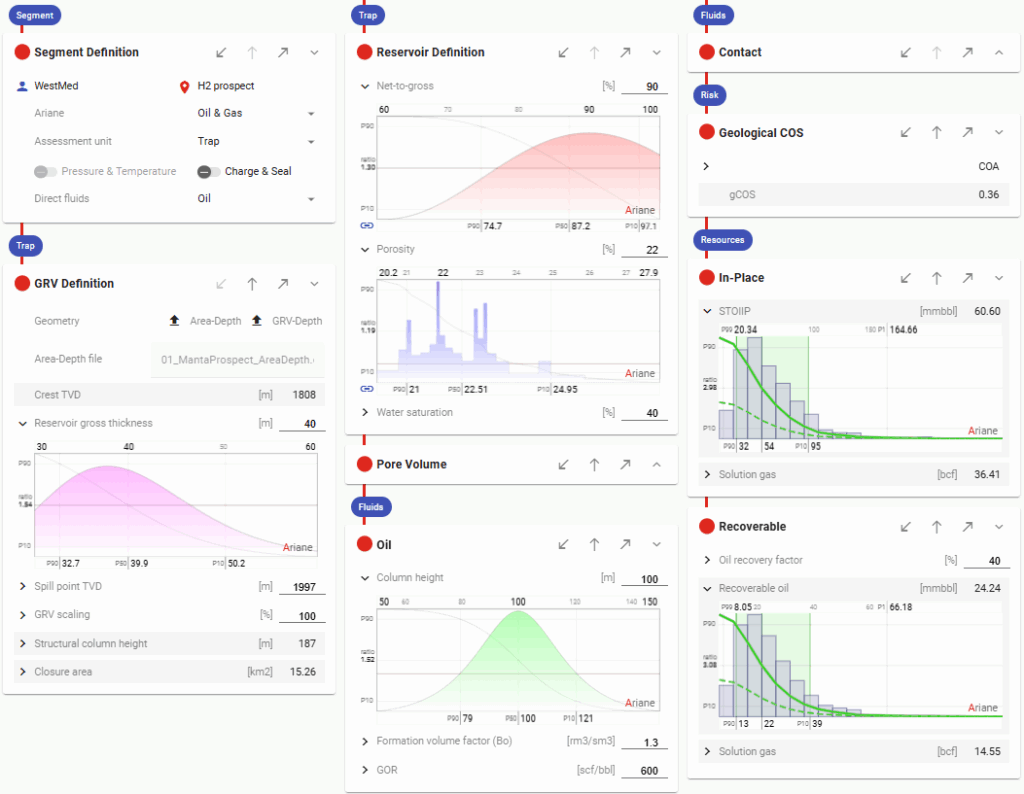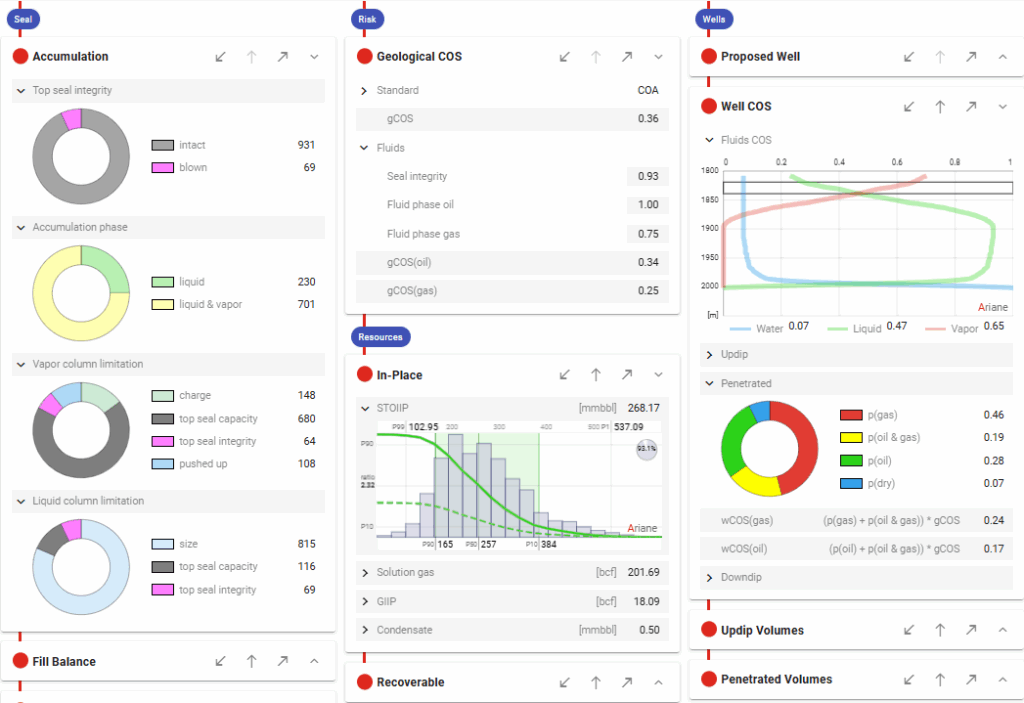Ariane for Oil & Gas
The risk and volume assessment of oil and gas prospects and the suggested exploration wells requires a structured methodology integrating subsurface uncertainty. With an understanding of pore volume, the expected fluid type and its underlying controls, predictions of hydrocarbon phase, column heights and in-place volumes can be made for prospects and its different segments. The risk for an exploration wells can differ significantly from the risk of the entire segment or prospect, dependent on its position relative to the predicted contacts. With Ariane Oil & Gas, prospects and exploration wells can be consistently assessed in the context of pore volume, charge, seal and PVT uncertainty.
Ariane Highlights
See how effective and transparent prospect assessment can be. Light years away from legacy workflows…
Why complicated if it can be simple?
You want to evaluate the prospectivity for oil of a simple trap.
You provide your best estimates for gross rock volume, reservoir parameters and hydrocarbon properties.
You assign uncertainty distributions and check which parameter matters most in the sensitivity analysis.
You run Monte Carlo and get uncertainty ranges for in-place and recoverable resources.
Ariane provides you with reliable results, within seconds, simple to follow for transparent QC.
Rolling up segments made easy
Your prospect has many possible reservoirs, both vertically and laterally, and you need to estimate the risk and volume of the total prospect.
You want the risk to be correlated between segments: if one segment works, correlated segments are likely to work as well.
You also want volume parameters to correlate: if one segment has a good porosity, correlated segments should also be in the higher porosity ranges.
You run a fully probabilistic risk and volume aggregation of the prospect.
Ariane features the Aggregation Space, a one-in-all view, where you can see all the segment inputs and outputs, as well as the prospect risk and volume summaries.
Stop guessing, start explaining
Your prospect is in an area where both oil and gas have been found, next to each other – every prospect is a surprise.
You study the column heights around your prospect, the nature of the charging fluids, and the controlling underlying factors.
You provide estimations of uncertainty ranges for charge volume and composition, top seal, and lateral seals.
You run a quick Monte Carlo simulation and get an estimation of the charge phase, retained phase, column heights and hydrocarbon properties, for the entire prospect and your planned exploration well.
Ariane allows you to estimate the likelihood of oil versus gas for your entire prospect and helps you find the right spot in your exploration well to optimize the likelihood for oil.
Standard Assessment
Standard assessments are simple calculations based on pore volume and simple assumptions on contained fluids, with the goal of estimating the order of magnitude of risk and volume for a specified trap.
The calculation of the in-place and recoverable hydrocarbons in Ariane involves total pore volume, oil and/or gas column heights and properties, and a recovery factor.
Stacked prospects & Multiple segments
To estimate the risk and resources for a larger area, or a more complex trap involving multiple layers, reservoir segments are “rolled up”.
Individual Ariane assessment can be aggregated to larger prospects or portfolios, with a fully probabilistic co-simulation honouring risk and volume correlations between segments.
Charge & PVT
In legacy workflows, the evaluation of hydrocarbon charging the prospect is disconnected from prospect assessment – however, integrating charge into prospect assessment is the first component for a solid phase prediction.
Ariane provides a framework where PVT data and results from basin modelling can be used to constrain charge volumes and phase, as well as trap phase and densities for a top-down petroleum systems analysis, coupled to pore volume and uncertainties.
Seal, column height & phase
Seals, column height and the retained oil versus gas phase are tightly linked and often control the commerciality of a prospect – but standard assessments do not take these principles into account.
With Ariane, specify top seal integrity from fracture gradients, top seal capillary entry pressure and fault seal, fully integrated in the uncertainty assessment, to constrain the phase column height predictions.
Well versus prospect risk
The currently used workarounds for the estimation of the likelihood for oil versus gas have significant shortcomings, for prospects, and even more for exploration wells.
In Ariane, the integration of charge, PVT and seal uncertainties into prospect assessment result in a consistent prediction of oil versus gas phases at the level of segments, prospects and exploration wells targeting only a finite portion of the trap.
Selected Resources





